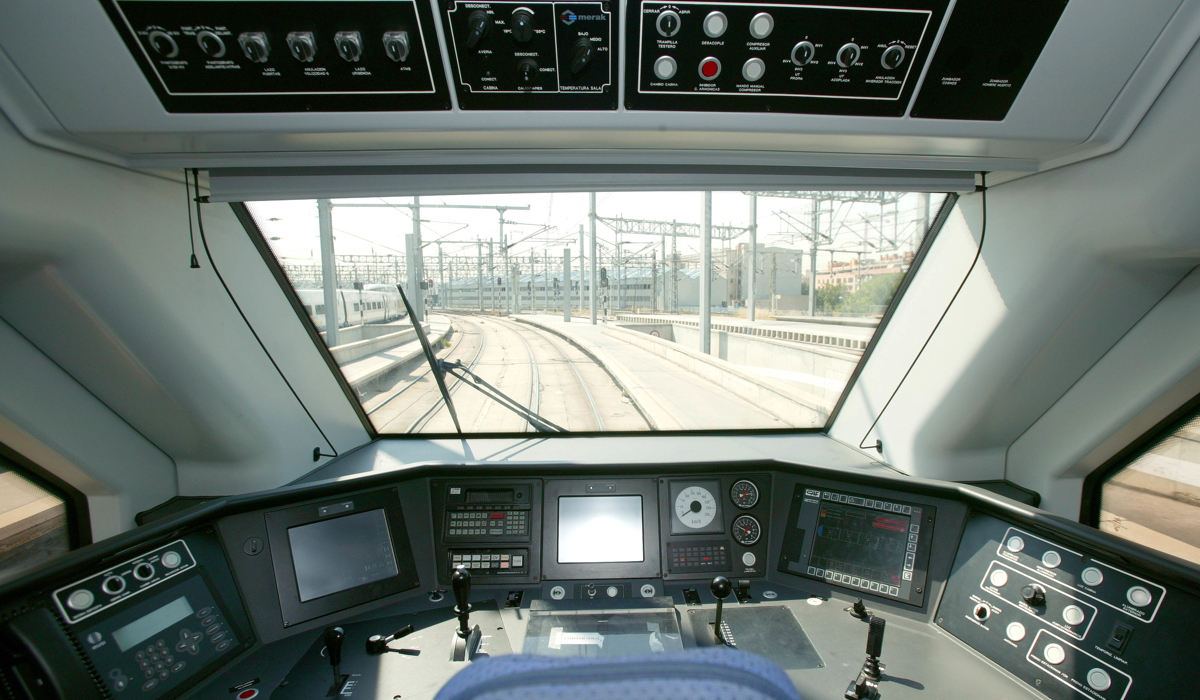The project is based on the implementation and improvement of the train control system based on communications CBTC (Communications-Based Train Control), which aims to optimize the resources of the railway infrastructure. The CBTC, is an automatic system of advanced technology that provides information on the deployment of trains and helps to obtain accurate data of its operation in real time. Facilitating the route of each train with a minimum interval of distance between the two (frequency) with high levels of safety. It is based on two-way communication records, between the train and the tracks by means of digital radio signals such as GSMR (Global Sistem for Mobile Railways) or TETRA (Terrestrial Trunked Radio), informing about their status and location periodically to the post of command, the same that calculates the distance between them. It has various degrees of automation, the GoA1 (manual) that needs the constant performance of a driver, the GoA2 (semi-automatic) where there
is a partial performance of the driver, the GoA3, without the presence of a driver, but with an assistant on board that help stop possible contingencies, and GoA4 which is the fully automatic mode of operation. In this sense, the CBTC is a very important operational ally, cataloged as the technological base to achieve the total automation of the railway system. The use of this technology is transversal to the entire railway infrastructure, since it can be applied to existing subway lines, as well as to new high-demand subway lines, improving its operational transport capacity. The CBTC provides reliable aspects that reduce the failure rate with respect to traditional rail systems. It has been designed to require less installed infrastructure which allows for a simpler implementation with lower maintenance costs. With respect to its development, it constantly draws on new, more energy efficient functionalities to adapt to the types of demand of travelers, making a safe, fast and reliable service effective. In this sense, the CBTC system has several components for its operation, among which are the ATO (Automatic Train Operation), whose purpose is to regulate the speed, distance, stopping and braking of the train; the ATP (Automatic Train Protection) system, which is a safety system that controls the speed and other aspects of driving a train, verifying that the driving is safe and that the speed is compatible with the speed allowed by the signaling, applying brake emergency otherwise, thus regulating traffic safety and ensuring passenger comfort. DMI (Driver Machine Interface), which is the interface between the driver and the system and facilitates two-way communication that allows the driver to obtain information on the operation (driving mode, train speed, door status, etc.) and regulate events related to external train applications; the zone controller, which receives information from the trains and is commanded by the movement authorities; and the Interlocking System, responsible for establishing routes and controlling signals and track equipment, preventing incompatible movements and ensuring safe movement.
____ Technical guide: Project type: Railway. Ad Maiorem participation: design, development and validation of train control and management systems (CBTC). Location: Madrid, Spain. Year: 2019. Relevant technology: - IBM Rational DOORS Programming: - C
- C++
- FPGA
- RTOS Standards: - CENELEC - EN 50126-1 - Railway Applications. The Specification and Demonstration of Reliability, Availability, Maintainability and Safety (RAMS). Part 1: Generic RAMS processes.
- CENELEC - EN 50128 - Railway Applications. Communication, signalling and processing systems. Software for railway control and protection systems.
Buscar
Categorías
Categories
Archivos
Archives
Categories
Archives
Contact us
The information contained in this document is informative in nature about the activities of the company. It contains general aspects and does not express any desire to provide specific third party data. We cannot guarantee that the data provided will be up to date in the near future. In this sense, if there is a willingness to use them, it is recommended to take the content as a reference and carry out its timely verification. For these purposes, we are at your disposal.
Share this article with your contacts!
© Copyright 2023 – Ad Maiorem Consulting. All rights reserved. Ad Maiorem Consulting is a brand that refers to one or more member companies at a global level, each of which is a legal and independent entity in the country in which it is located, without constituting an international company. Ad Maiorem Consulting offers consulting services in technology, engineering and innovation to its clients.
European Regional Development Fund
A way to make Europe






